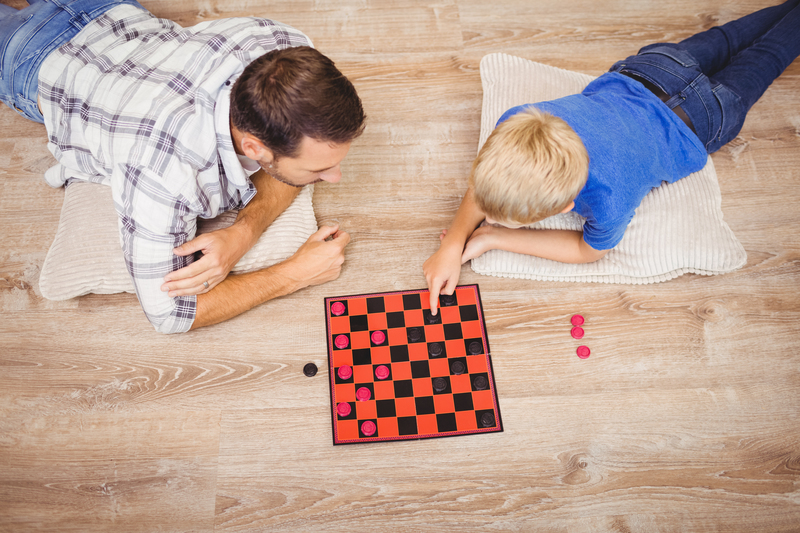The Journey to Order: Navigating the Challenges of Hoarder Clean Up
Hoarding disorder is a serious and challenging condition that affects millions of people worldwide. When clutter transforms from a manageable mess into an overwhelming mountain of items, it impacts not only the individual but also their loved ones and community. Hoarder clean up is never a simple task--it is a journey filled with emotional, physical, and logistical challenges. In this comprehensive guide, we'll explore the intricacies of navigating the cleanup of a hoarded home, offer practical tips, highlight the importance of empathy, and provide actionable steps for turning chaos into order.
Understanding Hoarding: More Than Just "Too Much Stuff"
Before embarking on the journey of hoarding clean up, it's crucial to understand the underlying dynamics of hoarding behavior. Hoarding disorder goes beyond simple clutter or messiness; it's a recognized mental health issue that compels individuals to acquire and hold onto items, often regardless of their actual value. This accumulation leads to cramped living spaces, unsafe conditions, and a decline in quality of life.
Common Signs of Hoarding Disorder
- Inability to discard possessions, even those with little or no value
- Severe anxiety when attempting to throw things away
- Rooms and walkways blocked by excessive items
- Social isolation due to embarrassment or shame
- Living spaces becoming unusable for their intended purposes
- Conflicts with family and friends over possessions
Recognizing these signs is the first step toward achieving order. It's not just about the clutter, but the profound emotional attachment to items, fear of losing important things, and anxiety about making decisions.

The Impact of Hoarding on Health and Safety
Hoarded homes present numerous health hazards. These include fire risks, trip and fall injuries, mold growth, pest infestations, and unsanitary conditions. For people living with hoarding disorder, conditions can quickly spiral out of control, endangering their safety and wellbeing. Hoarder home clean up inevitably requires addressing both the physical and psychological dangers present in the environment.
Navigating Emotional and Psychological Challenges
The process of cleaning up a hoarding situation is as much about emotional recovery as it is about physical cleaning. For the person affected by hoarding, letting go of items can be distressing and traumatic. For loved ones and professionals, it often requires patience, empathy, and understanding.
Empathy Over Judgment
- Listen actively: Give the individual time to express their feelings and concerns.
- Be patient: Progress may be slow and setbacks are normal.
- Avoid shaming or blaming: Focus on solutions and safety rather than past decisions.
Building trust is essential for a successful cleanup. Involving mental health professionals can be beneficial, as therapy and counseling may help address the root causes of hoarding behavior.
Planning the Hoarder Clean Up Process
Effective hoarder house clean up begins with a comprehensive plan. Tackling an entire house at once can be overwhelming; a step-by-step approach ensures progress without causing unnecessary stress to the homeowner. Here's how to get started:
Step 1: Assess the Situation and Set Realistic Goals
- Walk through the property and evaluate the volume of clutter, safety hazards, and structural issues.
- Identify priority areas such as kitchens, bathrooms, and exits for initial cleanup.
- Set small, measurable goals for each cleaning session.
Step 2: Assemble a Compassionate Team
- Recruit family, friends, or professional hoarder cleanup services experienced in sensitive situations.
- Assign roles based on strengths--some may sort, others may haul items, and some may provide emotional support.
- Consider enlisting a therapist or counselor to help manage emotional challenges.
Step 3: Gather Necessary Supplies
- Personal protective equipment (PPE) such as gloves, masks, and sturdy boots
- Heavy-duty trash bags, bins, and boxes
- Cleaning supplies--disinfectants, mop, broom, and vacuum
- First-aid kit for unexpected injuries
- Flashlights and tools for safely accessing all areas
The Cleanup: Room by Room Approach
Tackling one room at a time helps maintain focus and prevents feelings of overwhelm. Here's a structured guide for efficient hoarding clean up:
Kitchens and Bathrooms
- Remove expired food, clutter from surfaces, and check for water damage or mold.
- Sanitize counters, sinks, and appliances thoroughly.
- Dispose safely of hazardous waste like cleaning chemicals and medicines.
Living Areas
- Clear pathways and exits first to ensure fire safety.
- Sort items into keep, donate, recycle, and trash piles.
- Utilize visual cues (colored bins or labels) to make sorting easier.
Bedrooms
- Focus on creating a clean sleeping environment by removing excess items from the bed and surrounding area.
- Check for signs of dust mites, mold, or pests in mattresses and linens.
Attics and Basements
- Wear protective masks and gloves due to dust, mold, or animal droppings.
- Be alert for hidden valuables or sentimental items.
- Organize and dispose of items carefully as these areas often contain keepsakes or stored memorabilia.
Outdoor Spaces and Garages
- Remove old vehicles, machinery, or hazardous materials like paint cans and solvents.
- Clear pathways for emergency access.
Sorting and Disposing of Items
The process of deciding what stays and what goes is often fraught with emotional difficulty. A respectful sorting system is key to maintaining trust and ensuring progress.
- Keep: Items that are essential or have significant sentimental value.
- Donate: Items in good condition that may benefit others.
- Sell: Items with value, but consider the practicality of reselling.
- Recycle: Paper, plastics, electronics, and other recyclables.
- Trash: Broken, contaminated, or unusable items.
When in doubt, give the homeowner a voice in the decision-making process. Respect fosters cooperation and leads to better outcomes in hoarder home clean up.
The Benefits of Hiring Professional Hoarder Clean Up Services
Tackling a hoarder clean out alone can be overwhelming and unsafe. Professional hoarding remediation companies offer expertise, resources, and compassion--making the process safer and more efficient.
Why Choose Professional Help?
- Trained in biohazard cleaning, mold remediation, and heavy lifting
- Knowledgeable about local disposal regulations and recycling
- Use of specialized equipment for deep cleaning and restoration
- Ability to manage large-scale debris removal quickly
- Insurance and liability coverage to protect property and people
- Emotional support and crisis intervention skills
When selecting a hoarder cleanup service, look for companies with positive reviews, relevant certifications, and transparent pricing. Professional cleaners can make the journey to order smoother and less stressful for everyone involved.
Preventing Relapse and Maintaining Order
The journey doesn't end when a home is spotless. Preventing relapse and fostering sustainable habits is crucial for long-term success. Here's how you can support ongoing order:
- Routine cleaning schedules - Set weekly or monthly check-ins for maintenance.
- Minimalist organizing - Use simple, functional storage solutions to reduce clutter buildup.
- Therapy and support groups - Encourage participation in counseling or hoarding support communities.
- Accountability partners - Friends or family can help with regular encouragement and assistance.
- Celebrate milestones - Recognize progress with rewards and positive reinforcement.
Maintaining an orderly home is a lifelong commitment for former hoarders. Having support and a solid post-cleanup plan reduces the chances of reverting to old habits.
Legal and Community Considerations
Severe hoarding situations sometimes lead to legal intervention or involve housing authorities. Knowing when to involve external agencies is essential for health and safety.
- If the property violates local ordinances, notify code enforcement or adult protective services.
- Landlords may need to work with tenants and social services for safe remediation.
- Neighbors should approach situations with sensitivity, balancing community safety and individual dignity.
Remember: compassion, not confrontation, produces the best results when dealing with legal and social issues related to hoarding.
Success Stories: From Chaos to Clarity
Many people overcoming hoarding disorder have written about their experiences, offering hope to others facing similar challenges. Transformation is possible--with the right support, strategies, and perseverance, people can reclaim their homes and lives.
- Jane's Story: After years of living in a home filled with newspapers and boxes, Jane sought therapy and assembled a team of trusted friends to help her downsize. The process was slow but steady, and she now enjoys a clean, safe living space.
- Mark's Journey: Mark partnered with a professional hoarding cleanup team and discovered family photo albums and important documents he thought were lost. With regular check-ins, he maintains order and feels less anxious in his home.
Each story underscores the importance of compassion, teamwork, and persistence in hoarder clean up efforts.

Frequently Asked Questions (FAQ) About Hoarder Clean Up
How long does it take to clean a hoarded home?
Cleanup times vary depending on the severity and size of the hoard. Mild cases can take a few days, while severe hoarding cleanups may last several weeks or require ongoing follow-up visits.
Is it safe to clean a hoarded home without professionals?
For light to moderate clutter, family and friends may be sufficient. However, when dealing with biohazards, mold, pests, or structural issues, professional hoarder remediation services are recommended for safety and effectiveness.
How can I help a loved one who is hoarding?
- Approach with empathy and listen without judgment.
- Offer support and help them find qualified mental health professionals.
- Encourage small steps rather than major cleanouts overnight.
What should be done with sentimental or valuable items found during cleanup?
Set aside a special box or area for items of significant personal or monetary value. Let the homeowner decide on their fate, and consider working with appraisers or organizers for valuable collections.
Conclusion: Embracing the Journey to Order
The journey to order after hoarding is complex, requiring a blend of patience, empathy, organization, and professional expertise. Each step toward a cleaner, safer home brings renewed hope and a higher quality of life. Whether you're helping a loved one or seeking to reclaim your own space, remember--progress is possible, one small victory at a time. With the right support, understanding, and determination, any hoarded home can be transformed into a safe, welcoming sanctuary.
For those facing the daunting task of hoarder clean up, know that you are not alone. Support, resources, and compassionate professionals are available to guide you every step of the way.
Additional Resources
- Anxiety and Depression Association of America - Hoarding Disorder
- International OCD Foundation - Hoarding
- National Institute of Mental Health - Hoarding Disorder
Start your journey to order today--break free from the clutches of clutter, and embrace the life-changing potential of a clean and organized home.